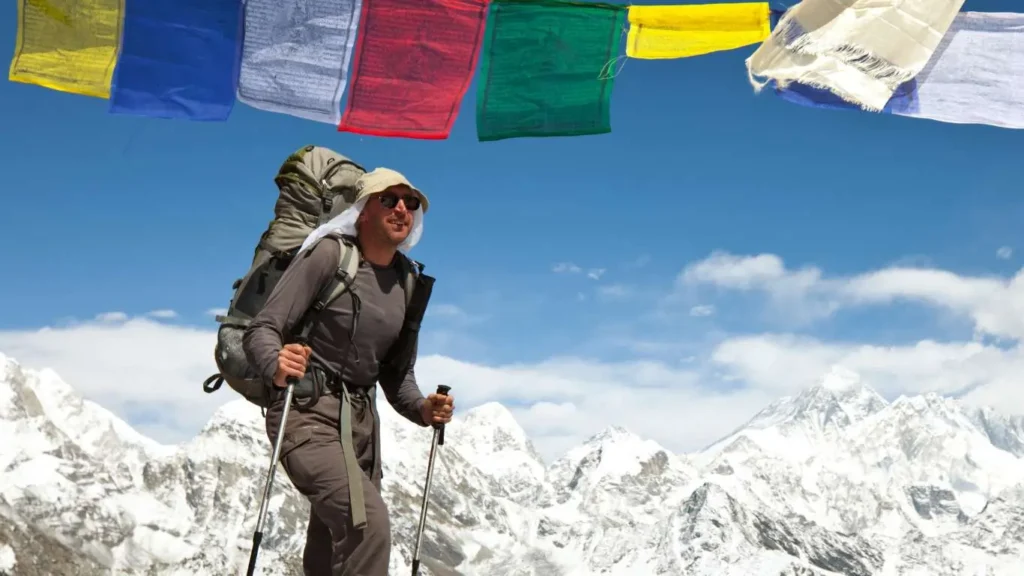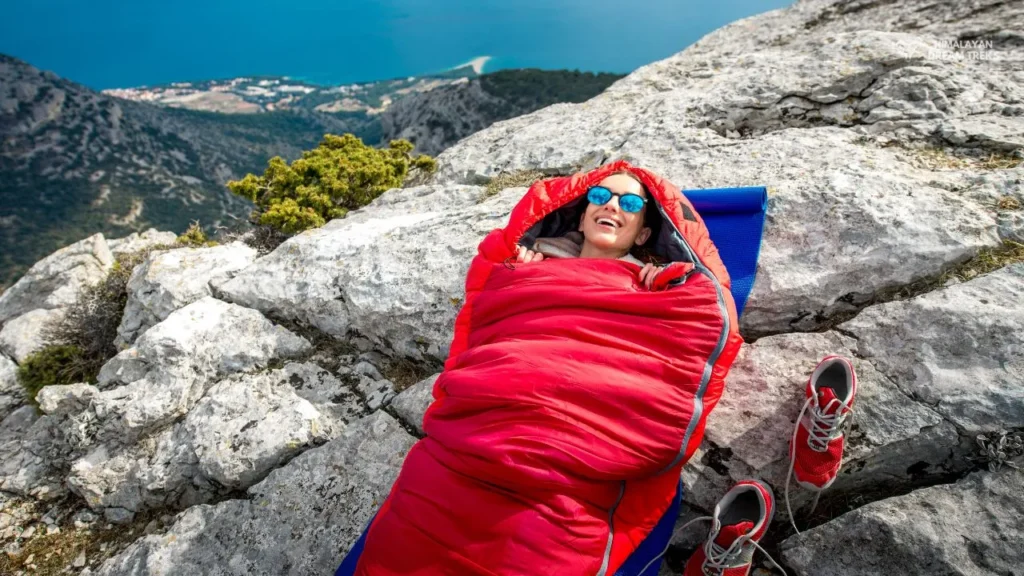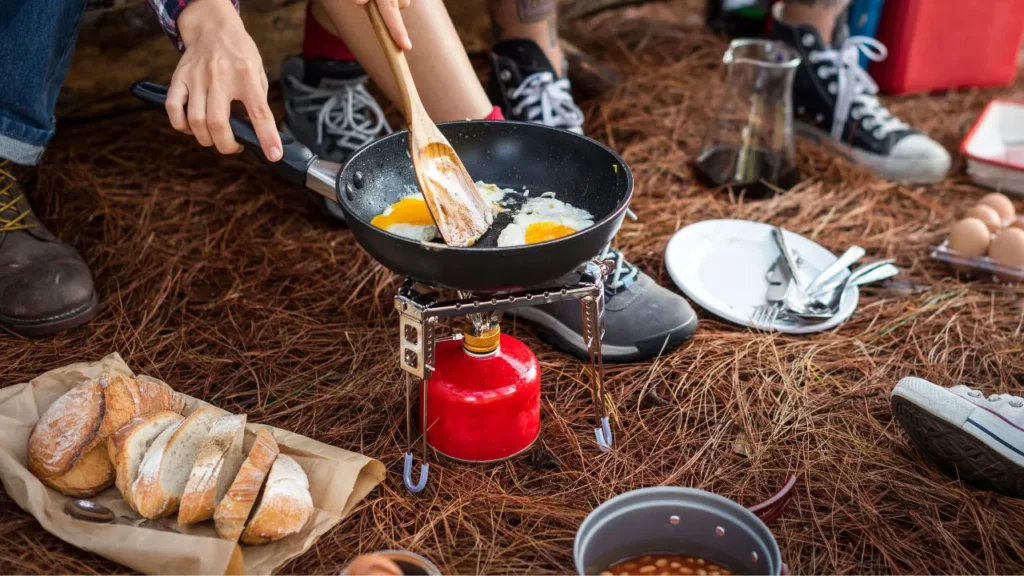Trekking in the Himalayas offers an incredible adventure but also presents significant challenges, such as dealing with extremely cold winds and low temperatures while trekking in winter or a high altitude mountain. Whether you’re an experienced trekker or a beginner, it’s crucial to prepare in advance for harsh weather conditions. This guide provides practical tips and techniques to help you stay warm, safely navigate the Himalayan cold and trek with safety.
Proper Clothing
The first tip for staying warm in the Himalayas is to dress appropriately from head to toe. A common mistake trekkers make is wearing multiple layers on their upper body while neglecting their lower body. It’s essential to layer both the upper and lower body effectively.

Key Points for Clothing:
- Gloves: Use fleece gloves instead of woolen ones, as fleece retains warmth even when wet and is less susceptible to cold.
- Windproof Shell: A windproof shell is essential for blocking cold winds, which can rapidly decrease body temperature.
- Avoid Padded Jackets: Inside a sleeping bag, padded jackets can prevent proper heat regulation. Instead, wear soft, insulating materials like wool or fleece.
Sleeping in the Right Way
Sleeping comfortably in cold Himalayan temperatures can be challenging. Here are some tips to help you stay warm:
- Cover Your Head: Always cover your head when sleeping to retain body heat.
- Use Hot Water Bags: Place hot water bags inside your sleeping bag to create warmth.
- Full Clothing: Wear full-length clothing, such as fleece layers, to trap heat and keep warm throughout the night.

Use a Warm Bottle Inside the Sleeping Bag
A great way to stay warm is to use a bottle filled with warm water inside your sleeping bag. Place the bottle near your chest or between your thighs to maintain warmth. Ensure the bottle is leak-proof.
Proper Layering
Proper layering is key to regulating body temperature. While trekking, adjust your layers based on your activity level to avoid excessive sweating, which can lead to rapid cooling when you stop moving. A windproof shell can help reduce wind chill and manage perspiration. You should have list of trekking gears that you must carry in your backpack.
Eat a Proper Meal
Eating well is essential in cold weather. Aim for meals rich in carbohydrates, as they help generate heat and maintain body temperature. Avoid alcohol, as it can lead to heat loss and increase the risk of hypothermia. Instead, focus on balanced meals and consider eating what the locals eat for optimal nutrition.
Healthy Eating Tips:
- Avoid Alcohol: It can cause heat loss and impair your body’s ability to maintain a stable temperature.
- Eat Slowly: Long exposure to cold can slow metabolism, so eat slowly and in small portions.
- Include Protein: Small amounts of protein can help generate body heat.
- Carry Ready-to-Eat Soups: They provide nutrition and hydration.

Exercises and Body Movement
Keeping your body moving is an effective way to stay warm. Simple exercises like wiggling your toes and fingers can help if they feel cold. Practices like Pranayam (yogic breathing) can kindle internal warmth, while meditation can help maintain mental clarity and focus.
Mental Preparation and Positive Mindset
Having a positive mindset is crucial for completing a trek, especially in challenging environments like the Himalayas. A strong mental attitude can help you push through difficult conditions and enhance your overall experience.
Mental Preparation Tips:
- Expect the Unexpected: Be flexible and prepared for unforeseen challenges.
- Practice Meditation: It can help you gain clarity and peace of mind before and during the trek.


Leave a Comment